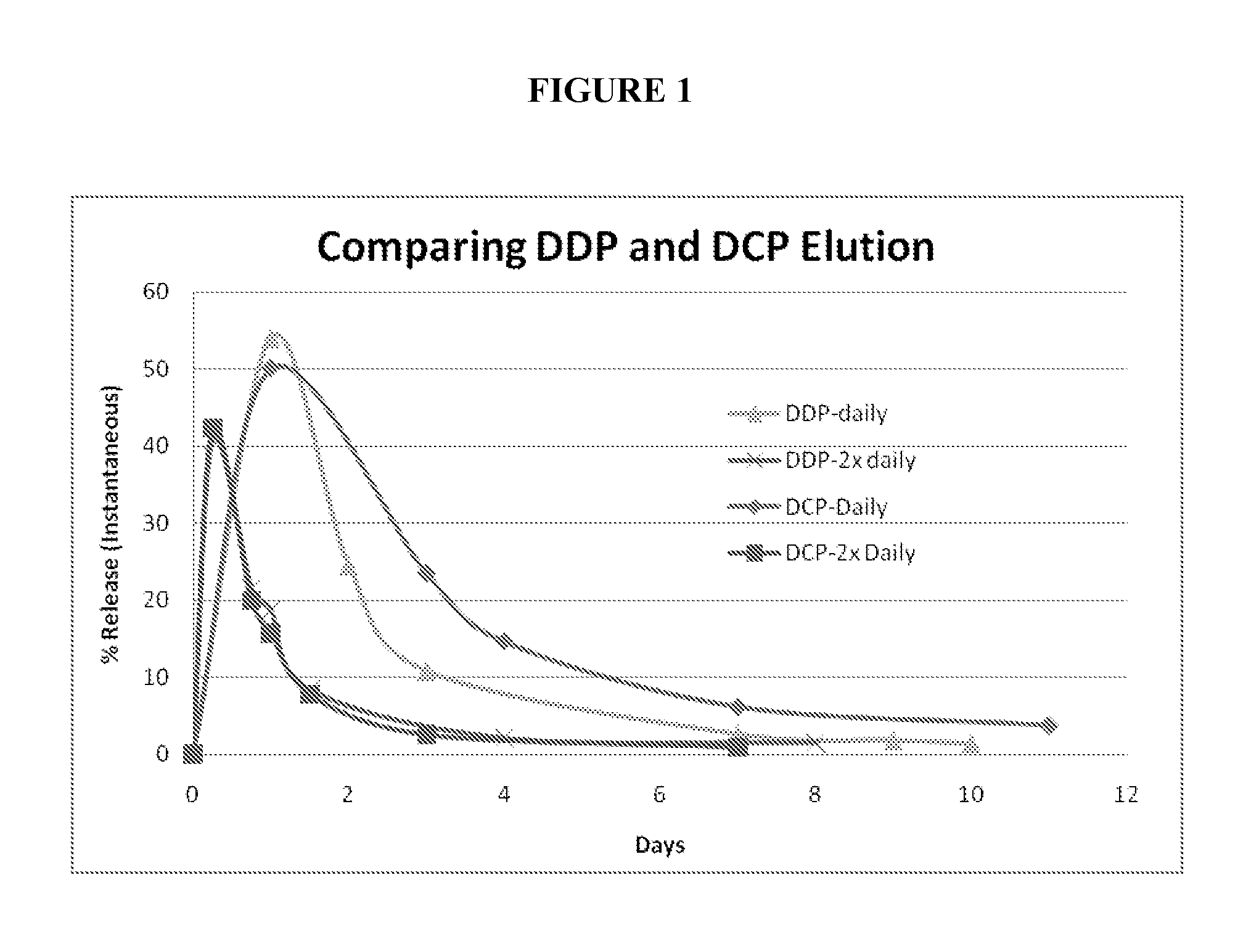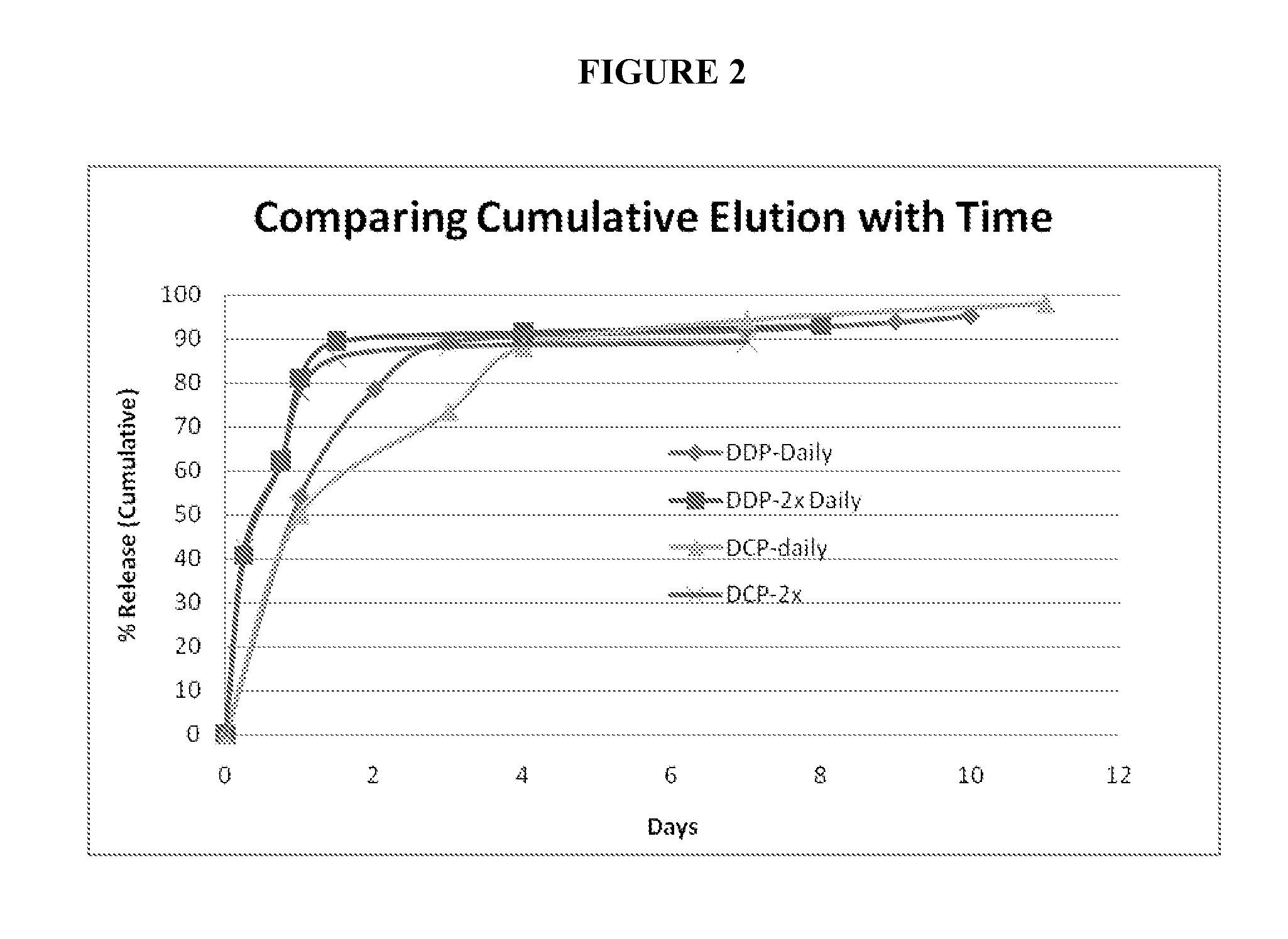Methods for treating diseases of the lung
- Summary
- Abstract
- Description
- Claims
- Application Information
AI Technical Summary
Benefits of technology
Problems solved by technology
Method used
Image
Examples
example 1
Manufacture of Hydrogel (Amine-Ester Chemistry)
[0114]A solution of 8ARM-20K-NH2 was prepared in a Falcon tube by dissolving about 0.13 g solid monomer in about 2.5 mL of sodium phosphate buffer (buffer pH 7.36). The mixture was shaken for about 10 seconds at ambient temperature until complete dissolution was obtained. The Falcon tube was allowed to stand at ambient temperature. In another Falcon tube, 0.10 g of 8ARM-15K-SG was dissolved in the same phosphate buffer as above. The mixture was shaken for about 10 seconds and at this point all the powder dissolved. The 8ARM-15K-SG solution was poured immediately into the 8ARM-20K-NH2 solution and a timer was started. The mixture was shaken and mixed for about 10 seconds and a 1 mL solution of the mixture was pipetted out using a mechanical high precision pipette. The gel time of 1 mL liquid was collected and then verified with the lack of flow for the remaining liquids. The get time data of the formulation was recorded and was about 1 m...
example 2
Manufacture of Hydrogel (Amine-Ester Chemistry)
[0115]A solution of 8ARM-20K-NH2 was prepared in a Falcon tube by dissolving about 0.13 g solid monomer in about 5 mL of sodium phosphate buffer (buffer pH 7.36). The mixture was shaken for about 10 seconds at ambient temperature until complete dissolution was obtained. The Falcon tube was allowed to stand at ambient temperature. To this solution, 0.10 g of 8ARM-15K-SG was added. The mixture was shaken to mix for about 10 seconds until all the powder dissolved. 1 mL of the mixture was pipetted out using a mechanical high precision pipette. The gel time of the formulation was collected using the process described above. The gel time was about 1 min 30 seconds.
example 3
Manufacture of Hydrogel (Thiol-Ester Chemistry)
[0116]A solution of ETTMP 1300 was prepared in a Falcon tube by dissolving about 0.04 g monomer in about 5 mL of sodium borate buffer (buffer pH 8.35). The mixture was shaken for about 10 seconds at ambient temperature until complete dissolution was obtained. The Falcon tube was allowed to stand at ambient temperature. To this solution, 0.10 g of 8ARM-15K-SG was added. The mixture was shaken for about 10 seconds until the powder dissolved. 1 mL of the mixture was pipetted out using a mechanical high precision pipette. The gel time was found to be about 3 seconds.
PUM
| Property | Measurement | Unit |
|---|---|---|
| Time | aaaaa | aaaaa |
| Time | aaaaa | aaaaa |
| Time | aaaaa | aaaaa |
Abstract
Description
Claims
Application Information
 Login to View More
Login to View More - R&D
- Intellectual Property
- Life Sciences
- Materials
- Tech Scout
- Unparalleled Data Quality
- Higher Quality Content
- 60% Fewer Hallucinations
Browse by: Latest US Patents, China's latest patents, Technical Efficacy Thesaurus, Application Domain, Technology Topic, Popular Technical Reports.
© 2025 PatSnap. All rights reserved.Legal|Privacy policy|Modern Slavery Act Transparency Statement|Sitemap|About US| Contact US: help@patsnap.com


